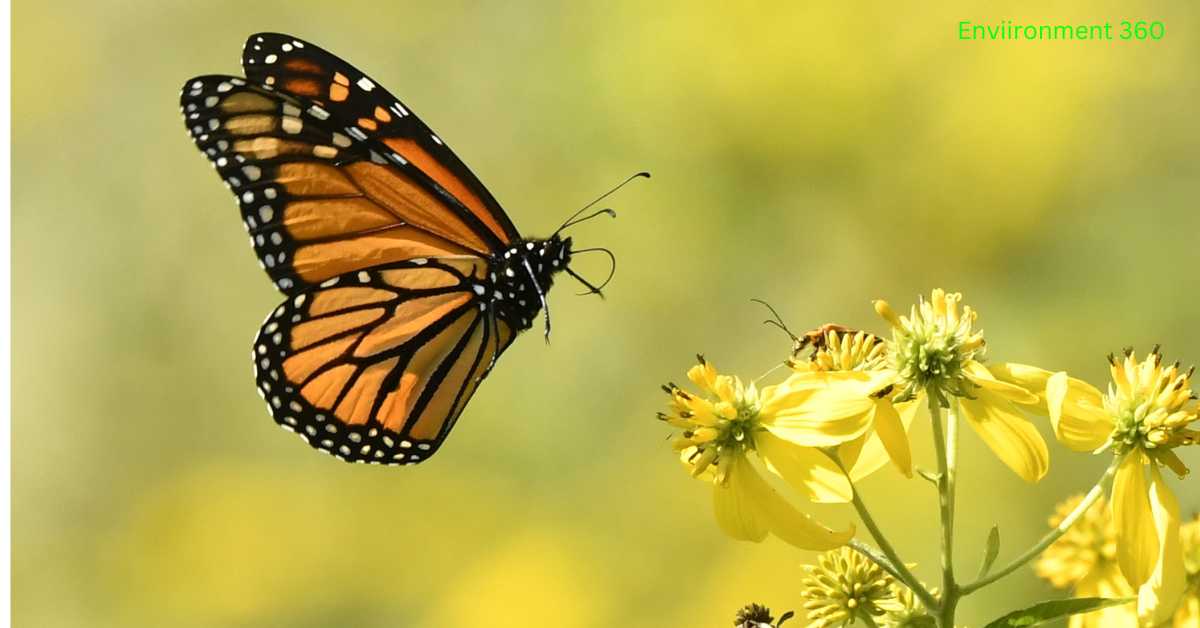Introduction
Butterflies are a symbol of beauty and transformation in nature, and the yellow monarch butterfly, with its striking color, is no exception. While the iconic orange monarch butterfly is widely known, lesser-known species and variations such as the yellow monarch butterfly captivate both scientists and nature enthusiasts alike. This article will explore the yellow monarch butterfly, delving into its biology, its environmental role, and its conservation needs.
Throughout this article, we will address questions about how the yellow monarch butterfly fits into the broader ecological framework, what differentiates it from other monarchs, and how environmental factors influence its existence. Furthermore, we will explore the challenges facing this beautiful creature in an ever-changing world, emphasizing its importance in the balance of nature.
What Is a Yellow Monarch Butterfly?
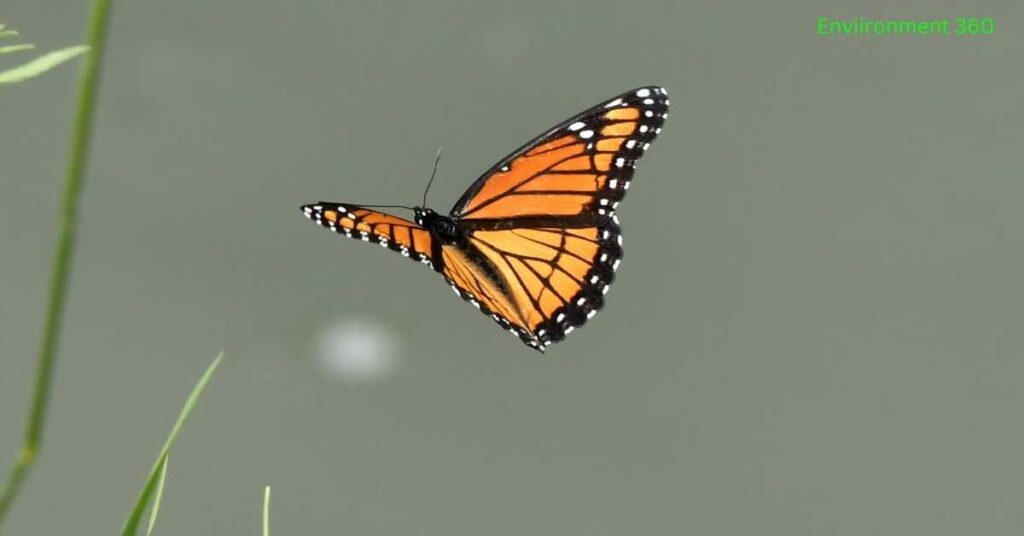
1. Classification and Biology
The term yellow monarch butterfly typically refers to a color variant of the common monarch butterfly (Danaus plexippus), though it could also refer to certain subspecies or close relatives that display yellow hues. The traditional monarch butterfly is famous for its bright orange wings with black veins and white spots, but variations exist in the wild, including butterflies with more yellow-toned wings. These variations are often the result of genetic mutations or environmental influences.
Monarch butterflies belong to the family Nymphalidae, one of the largest butterfly families, containing over 6,000 species. The genus Danaus is characterized by butterflies that depend on milkweed for their larvae, which makes them part of a highly specialized ecological niche.
2. Appearance and Differentiation from Other Monarchs
The yellow monarch butterfly closely resembles its more common orange counterpart but with a yellow hue in place of the typical orange. This coloration is less common and can occur due to genetic polymorphisms or environmental factors such as temperature and light exposure during the pupal stage. While yellow monarchs share the same characteristic black vein patterns, their unique coloration distinguishes them and makes them more susceptible to being mistaken for other species of yellow butterflies.
The yellow monarch is still capable of migrating long distances like its orange relatives, displaying similar behavior patterns and ecological roles. However, this coloration can sometimes reduce their ability to deter predators, as the orange coloration of monarchs is linked to their toxicity, warning predators of their unpalatability. With yellow wings, this signal may be less effective, altering their interactions with the environment.
Ecological Role of the Yellow Monarch Butterfly
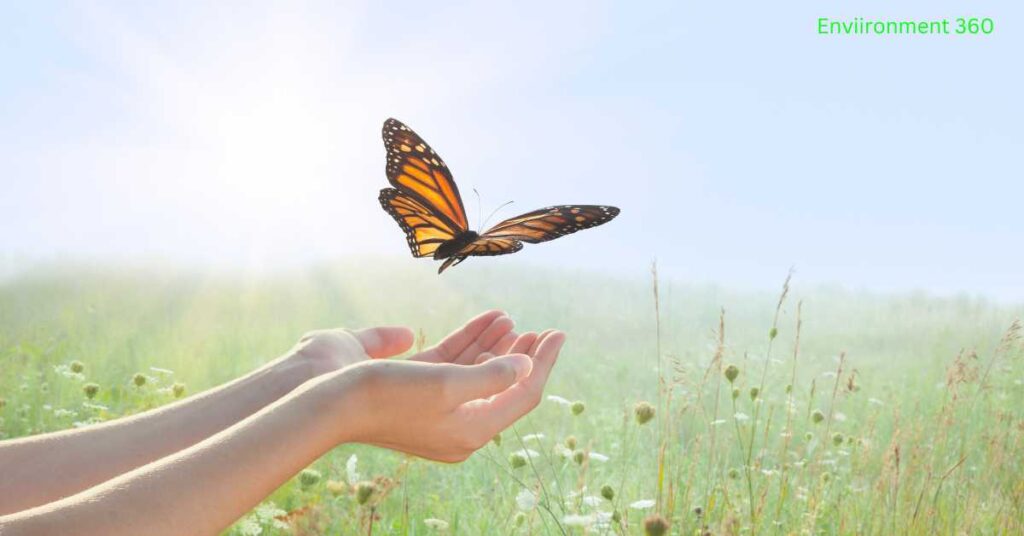
1. Pollination
Butterflies, including monarchs, play a critical role in the pollination of various plants, and the yellow monarch butterfly is no exception. As they flit from flower to flower in search of nectar, they inadvertently transfer pollen, aiding in the reproductive processes of many flowering plants. Monarchs favor nectar-rich plants such as milkweed, which itself is a vital component of their life cycle. In the case of the yellow monarch, its role as a pollinator remains unchanged, contributing to the health of ecosystems and promoting biodiversity.
2. Food Web Dynamics
The yellow monarch butterfly is part of a complex food web. As a caterpillar, it is vulnerable to predation by birds, small mammals, and invertebrates, though the milkweed it feeds on makes it toxic to many predators. This toxicity persists in its adult form, providing protection against birds and other potential threats. However, with the yellow coloration, predators may not associate it as strongly with toxicity as they do with the typical orange monarchs, possibly making the yellow monarch more vulnerable in some ecosystems.
The yellow monarch butterfly also plays a role as prey in ecosystems that have evolved to counteract the toxic chemicals derived from milkweed. Some predator species have adapted to tolerate or metabolize the toxins, feeding on monarchs without harm. Therefore, even this color variant of the monarch butterfly contributes to the dynamics of predator-prey relationships in its environment.
Migration Patterns of the Yellow Monarch Butterfly
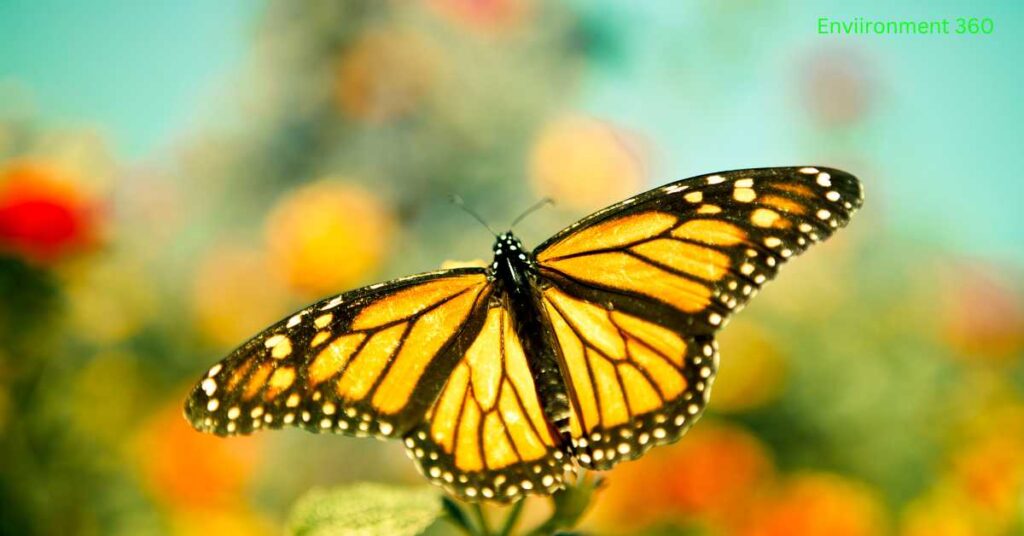
1. Monarch Migration
Monarch butterflies are famous for their long-distance migrations. Each year, millions of monarchs travel from North America to Mexico and back, covering thousands of miles. They migrate in search of favorable climates and food sources, primarily milkweed for their larvae. Yellow monarch butterflies are part of this migratory journey, following the same patterns and experiencing the same environmental pressures as their orange counterparts.
2. Environmental Factors Influencing Migration
Monarch butterfly migration is a delicate process influenced by environmental conditions such as temperature, wind patterns, and food availability. Climate change is altering these environmental factors, making migration more perilous. Droughts, unusual temperature patterns, and loss of habitat along migratory routes threaten monarch populations, including the rarer yellow monarchs.
In recent years, researchers have observed shifts in migration timing and routes, with monarchs arriving earlier or later than expected. The yellow monarch butterfly, like other monarchs, may face increasing challenges due to these shifts, as the timing of their life cycle must align with the availability of milkweed and other critical resources.
The Life Cycle of the Yellow Monarch Butterfly
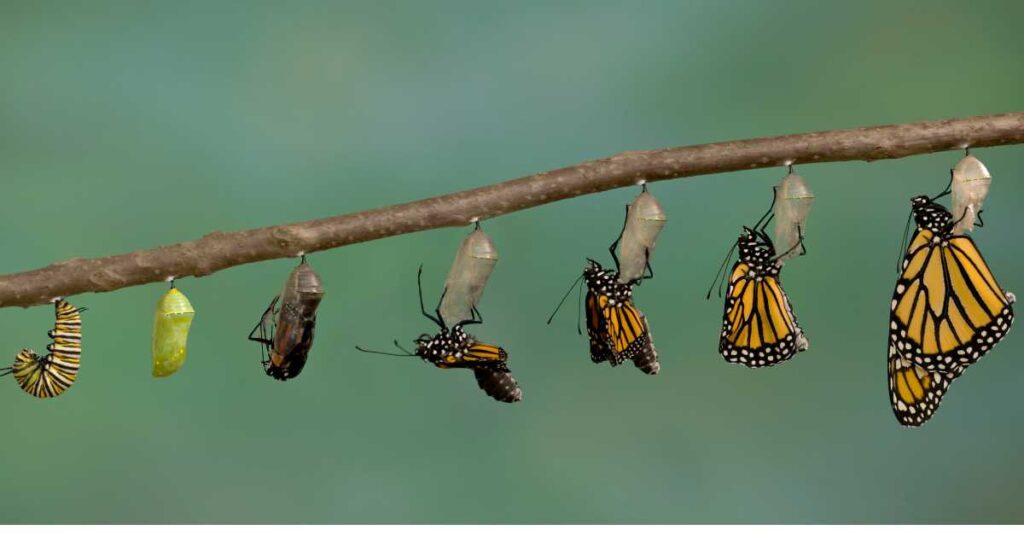
1. Egg Stage
The life cycle of the yellow monarch butterfly begins when a female lays her eggs on milkweed plants. Milkweed is crucial for monarch caterpillars, as it is the sole food source for their larvae. A female monarch carefully selects milkweed plants to deposit her eggs, ensuring that her offspring will have the necessary resources to thrive.
Monarch eggs are tiny and oval-shaped, with a cream-colored hue. Within a few days, they hatch into larvae (caterpillars) that immediately begin feeding on the milkweed leaves.
2. Caterpillar (Larval) Stage
The caterpillar stage is perhaps the most iconic part of a monarch’s life cycle. Monarch caterpillars are easily recognizable with their black, white, and yellow stripes. This coloration, known as aposematism, serves as a warning to predators that the caterpillar is toxic due to the milkweed it consumes.
During this stage, the caterpillar undergoes multiple molts, shedding its skin several times as it grows. This is also when it accumulates toxins from the milkweed, making it unpalatable to most predators.
3. Pupa (Chrysalis) Stage
After reaching its full size as a caterpillar, the monarch forms a chrysalis. During this pupal stage, it undergoes metamorphosis, transforming into an adult butterfly. Inside the chrysalis, the caterpillar’s body breaks down and reorganizes into the form of an adult butterfly.
Interestingly, environmental factors such as temperature can influence the color variation in monarchs, including the emergence of yellow monarchs instead of the more common orange coloration. Warmer temperatures or changes in the environment during this stage may trigger genetic expressions that result in yellow-hued butterflies.
4. Adult Butterfly Stage
Once the metamorphosis is complete, the adult yellow monarch butterfly emerges from the chrysalis. It waits for its wings to dry and strengthen before taking flight. As an adult, the yellow monarch’s primary focus is reproduction. Females seek out milkweed plants to lay eggs, continuing the cycle, while males engage in courtship behavior to find mates.
Adult monarchs also play a critical role as pollinators, helping to maintain healthy ecosystems by transferring pollen between plants.
Conservation of the Yellow Monarch Butterfly
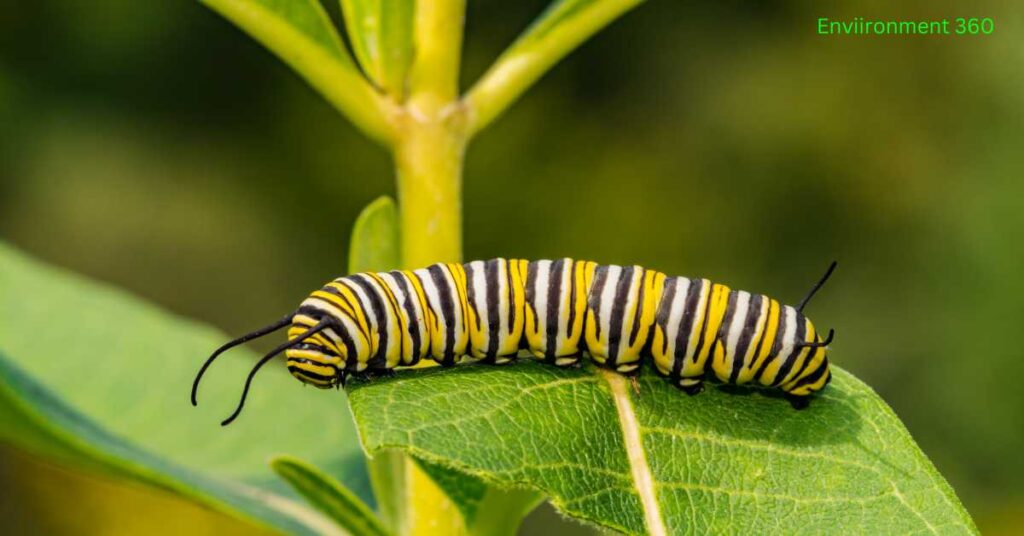
1. Threats to Monarch Populations
The yellow monarch butterfly, like all monarchs, faces numerous environmental threats. The most significant threat is habitat loss due to agricultural expansion, urban development, and deforestation. As milkweed populations decline, monarchs struggle to find suitable breeding grounds for their larvae.
Additionally, climate change is altering the availability of nectar sources and suitable breeding conditions. Prolonged droughts and changes in weather patterns disrupt the delicate balance of the monarch’s migratory and reproductive cycles, making survival more difficult.
2. Pollution and Pesticide Use
Widespread pesticide use is another critical threat to monarch butterflies. Pesticides can kill off not only the milkweed plants that monarchs depend on but also harm adult butterflies directly. This includes herbicides that target milkweed and insecticides that may kill monarchs as non-target species.
For the yellow monarch butterfly, this issue is particularly pressing as it may already face additional challenges due to its coloration, which could make it less able to deter predators. The decline of milkweed and nectar plants is a direct threat to their survival.
3. Conservation Efforts
Efforts to conserve monarch populations are underway, with initiatives focused on restoring milkweed populations and creating migratory corridors. Programs such as Monarch Waystations and habitat restoration projects aim to provide safe havens for monarchs along their migratory routes.
Conservationists encourage the planting of native milkweed species to support monarch reproduction and reduce pesticide use in areas where monarchs are likely to breed or migrate. Protecting migratory paths and wintering habitats, especially in Mexico and southern parts of the United States, is essential to ensuring the survival of monarch butterflies, including the yellow monarchs.
The Importance of Citizen Science in Monarch Conservation
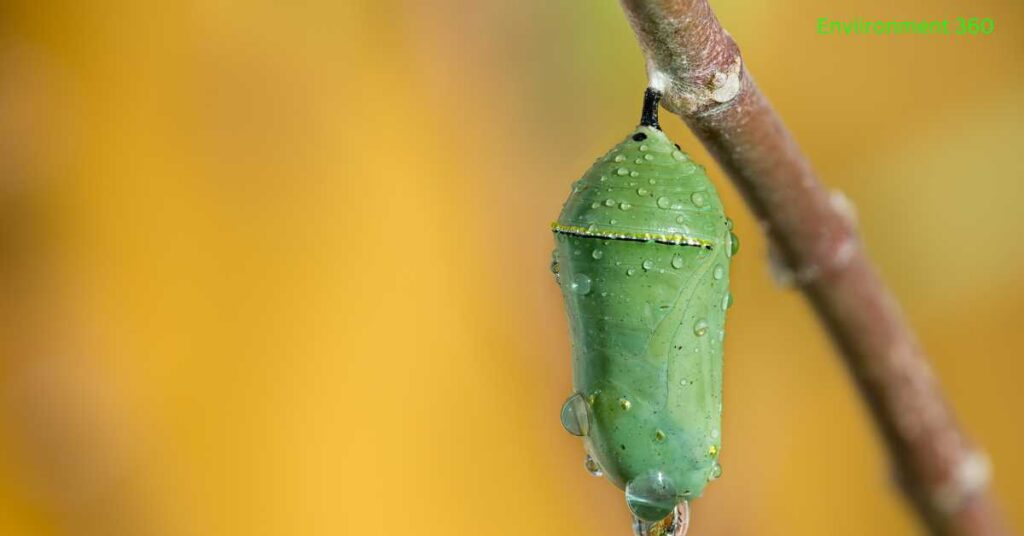
1. Tracking Monarch Populations
One of the most successful ways to track and conserve monarch butterflies is through citizen science initiatives. Butterfly enthusiasts, researchers, and everyday people participate in tagging and tracking programs that monitor monarch migration and population health.
Tagging programs allow scientists to gather data on monarch migration routes, timing, and population numbers, providing valuable insights into the environmental challenges monarchs face. This data is crucial for implementing effective conservation strategies.
2. The Role of the Public in Supporting Monarchs
Public involvement is critical for the conservation of monarch butterflies. People can help by planting milkweed and other native flowering plants that provide nectar and breeding grounds for monarchs. Avoiding pesticide use and supporting environmental policies that protect habitats are additional ways the public can contribute to monarch conservation.
Educational initiatives that raise awareness about the threats to monarch butterflies and their ecological importance can inspire further action. Monarch festivals, workshops, and community projects have gained popularity, highlighting the beauty and significance of these creatures.
Conclusion
The yellow monarch butterfly, with its unique coloration and ecological importance, represents a small yet significant variation in the monarch butterfly species. Like all monarchs, it plays a crucial role in pollination, the food web, and biodiversity. However, it faces numerous environmental threats, from habitat loss to climate change and pollution.
Understanding the yellow monarch butterfly and its role in the environment allows us to appreciate the intricate connections between species and their habitats. Conservation efforts, public awareness, and scientific research are all critical components of ensuring that this beautiful butterfly, along with its orange counterparts, continues to thrive in an ever-changing world. By protecting the environments that sustain them, we can ensure that monarchs remain a symbol of beauty and resilience in nature.
Read More: Italy Moths: A Fascinating and Crucial Part of the Ecosystem

